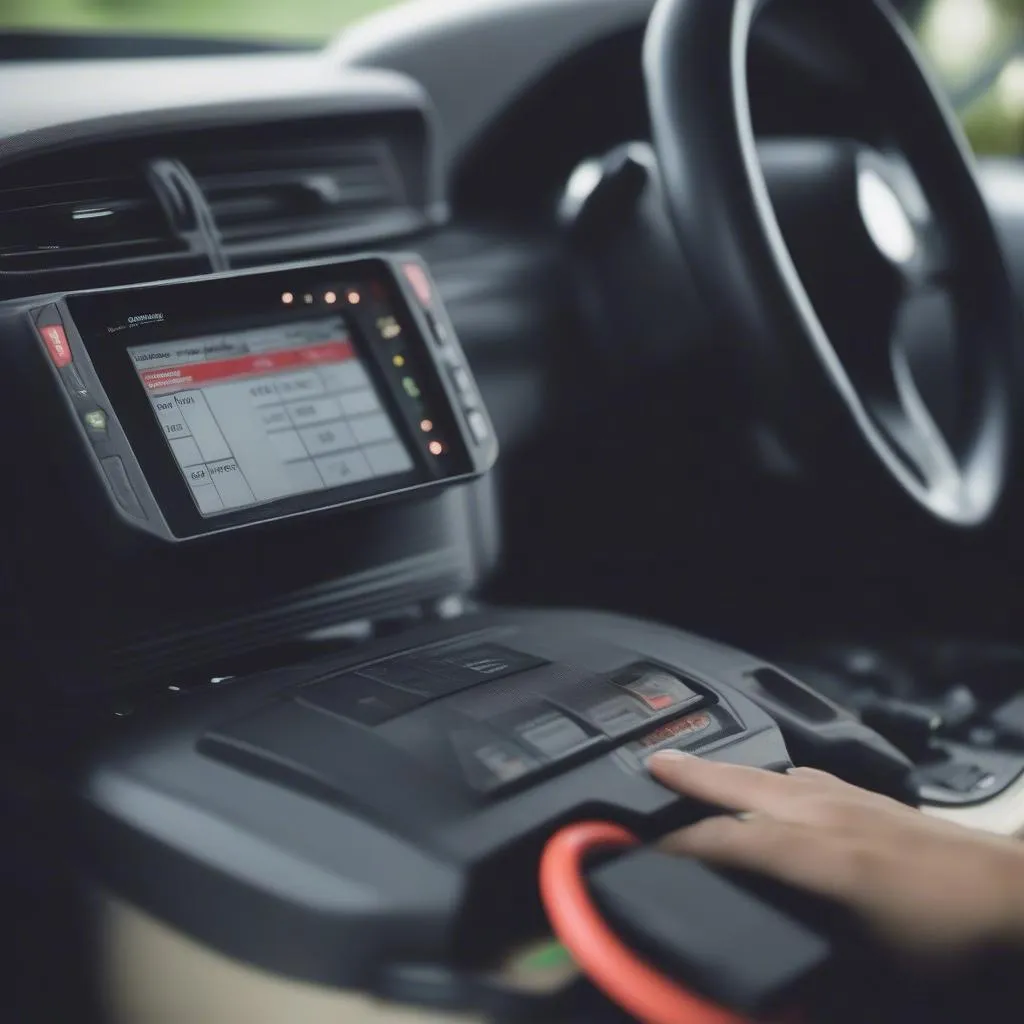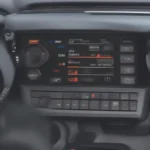An OBD2 scanner, also known as an OBD2 reader, is an essential tool for any car owner or mechanic. It allows you to communicate with your car’s computer and access a wealth of information about its health and performance. But what can an OBD2 scanner do exactly? This comprehensive guide will delve into the capabilities of OBD2 scanners and how they can benefit you.
Understanding OBD2 Scanners and Their Function
OBD2 stands for On-Board Diagnostics, Generation 2. It’s a standardized system that allows external devices, like OBD2 scanners, to interface with a vehicle’s onboard computer. This computer, also known as the Engine Control Unit (ECU), continuously monitors various systems in your car, collecting data from sensors located throughout the engine and other components.
When a problem arises, the ECU triggers a warning light on your dashboard, such as the “Check Engine” light. An OBD2 scanner acts as a key to unlock the information stored in the ECU, allowing you to decipher the cause of the warning light and other potential issues.
Common Uses of OBD2 Scanners
Here’s a closer look at some of the most common uses of an OBD2 scanner:
- Reading and Clearing Diagnostic Trouble Codes (DTCs): OBD2 scanners can read the DTCs stored in your car’s ECU. These codes are like error messages that pinpoint the source of a problem. Once you’ve addressed the issue, you can use the scanner to clear the codes and turn off the warning lights on your dashboard.
- Viewing Live Data Stream: OBD2 scanners can display real-time data from your car’s sensors, such as engine RPM, coolant temperature, oxygen sensor readings, and more. This information is invaluable for monitoring your car’s performance, identifying potential problems, and even improving fuel efficiency.
- Checking Emissions Readiness Status: Most OBD2 scanners can verify if your vehicle is ready for an emissions test. This feature is particularly helpful if your car has recently undergone repairs or modifications that might impact its emissions levels.
- Monitoring Fuel Economy: Some OBD2 scanners offer features to track your fuel economy over time, helping you identify driving habits or vehicle issues that might be impacting fuel consumption.
Beyond Basic Diagnostics: Advanced Capabilities
While the above functions cover the core capabilities of most OBD2 scanners, advanced models offer additional features:
- ABS and Airbag System Diagnostics: Certain scanners can access and diagnose issues within the Anti-lock Braking System (ABS) and airbag systems, providing critical information for safety-related repairs.
- Transmission and Body Control Module Access: High-end scanners can communicate with other modules beyond the ECU, such as the Transmission Control Module (TCM) and Body Control Module (BCM), providing comprehensive diagnostic capabilities.
- Bi-Directional Control: Some professional-grade scanners offer bi-directional control, allowing you to perform tests like activating solenoids, relays, and other components to diagnose complex issues.
Choosing the Right OBD2 Scanner
The market offers a wide range of OBD2 scanners, from basic code readers to professional-level diagnostic tools. The best choice for you depends on your needs and budget:
- Basic Code Readers: Ideal for car owners who want to check and clear basic engine codes and view limited live data.
- Bluetooth OBD2 Scanners: Connect to your smartphone or tablet via Bluetooth, offering a user-friendly interface and the ability to use third-party apps for enhanced diagnostics.
- Professional-Grade Scanners: Catered to mechanics and experienced users, these scanners provide comprehensive diagnostics, advanced features like bi-directional control, and access to multiple vehicle systems.
how to use bluetooth obd2 scanner
OBD2 Scanners: Empowering Car Owners and Mechanics
OBD2 scanners have revolutionized car maintenance and repair. They provide car owners with the ability to understand their vehicles better, diagnose problems early on, and potentially save on expensive repair costs. For mechanics, these tools are indispensable for efficient and accurate diagnostics. Whether you’re a car enthusiast or a professional mechanic, an OBD2 scanner is a valuable investment that pays for itself in the long run.
Frequently Asked Questions about OBD2 Scanners
Here are some common questions about OBD2 scanners:
- Will an OBD2 scanner work on my car?
OBD2 scanners are compatible with most gasoline-powered vehicles manufactured after 1996 in the United States and after 2001 in Europe. Diesel vehicles have different compliance dates. - Can I use an OBD2 scanner to reset my oil light?
Yes, most OBD2 scanners can reset the oil life monitor and turn off the oil change light after an oil change. - Is it legal to use an OBD2 scanner?
Yes, it is legal to use an OBD2 scanner on your own vehicle. However, regulations regarding the use of scanners for emissions testing may vary by state or country. - Can an OBD2 scanner detect all car problems?
While OBD2 scanners are powerful tools, they may not detect all car problems. Some issues, particularly mechanical ones, might not trigger a DTC or be accessible through the OBD2 port. - Where is the OBD2 port located in my car?
The OBD2 port is typically located under the driver’s side dashboard, near the steering column. You can consult your car’s manual for the exact location.
Need Help with your OBD2 Scanner?
Do you have more questions about OBD2 scanners or need assistance choosing the right one for your needs? We’re here to help! Contact our expert team via WhatsApp at +1(641)206-8880 or email us at [email protected]. We provide 24/7 customer support to answer all your OBD2 scanner inquiries.


